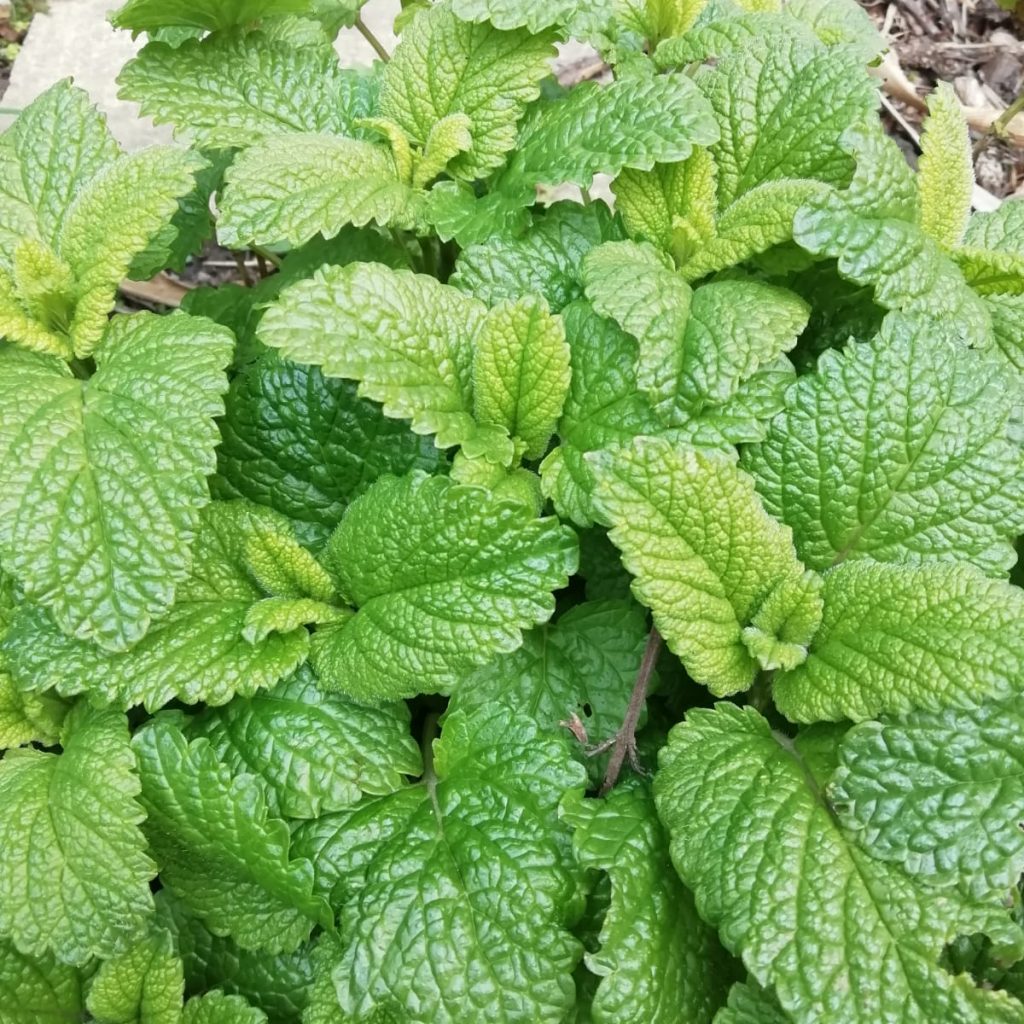Lemon Balm is a great herb to have in the garden for two reasons. One is that just a few leaves of lemon balm make a refreshing herbal tea in minutes and the other is that once it’s planted it requires no other maintenance. In fact, most people would advise only growing lemon balm in a pot, because it can be quite invasive and hardy.
We have 3 lemon balm plants in our food forest/permaculture garden and have them planted directly in the soil. The plant is easy to cut back and pull up, so we manage it’s spread that way. The herb also dies back completely over the winter, so this is a good time to divide the roots if you are wanting to control it’s growth.
Lemon balm is good for attracting wildlife to your plot, as the small white flowers are said to be popular with bees. One of the plants common names is ‘bee balm’ and the ‘Melissa’ in it’s scientific name relates to the Greek word for honeybee. Bee keepers are said to use lemon balm in their hives to keep the bees calm and deter swarming.
The leaves give off a subtle lemony scent that encourages it’s use in pot-pourri, but it’s most common use tends to be for consumption and herbal remedies. We add lemon balm leaves to salads to add a bit of sweetness and lemony aroma, but is can be used to lightly flavour cocktails, soups, omelettes, sauces and even cakes.
As a medicinal herb lemon balm has been used as a calmative to improve sleep and relieve anxiety. It is said to help with headaches, indigestion and the herpes virus. I regularly have lemon balm tea on an evening to help me unwind before bed. The leaves work well with other calming herbs like chamomile, rose petals, mint, hops and lavender, so you can infuse your own blend of ‘sleepy tea’ from whatever is in season in your garden.
Lemon Balm Uses
Lemon Balm Tea
Infuse 4-5 freshly picked & washed lemon balm leaves in a mug of boiling water for 10 minutes. Strain and enjoy!
Sleepy Tea
Pack your tea infuser with around 20g per mug of any of the following herbs and infuse for 10 minutes before straining: lemon balm, lavender, rose petals, chamomile flowers, hops, ginger.
Lemon Balm Pesto
Place a good handful of both lemon balm leaves and chives in a food processor. Add another handful of pine nuts, a clove of garlic, 3 tablespoons of olive oil, 3 tablespoons of lemon juice and some grated Parmesan and pulse until smooth. Serve stirred through pasta or as a base sauce for pizza/bruschetta.
Lemon Balm in a Salad
Use fresh, washed leaves in both a green and fruit salad.
We add lemon balm leaves to our ‘garden salad’ which normally consists of any lettuce/rocket/mustard/cress leaves we have growing at the time plus nasturtium leaves, salad burnet, lemon balm, sorrel, chives, spinach, mint, edible flowers and the young tender leaves of dandelions and chard. Whatever if growing in abundance and can be picked fresh.
Lemon Balm Mojito
Replace the mint in any mojito recipe with lemon balm for a twist on the classic cocktail. You can also use lemon balm to garnish other drinks and to add a slightly lemony compliment to a classic gin and tonic or vodka lemonade.

